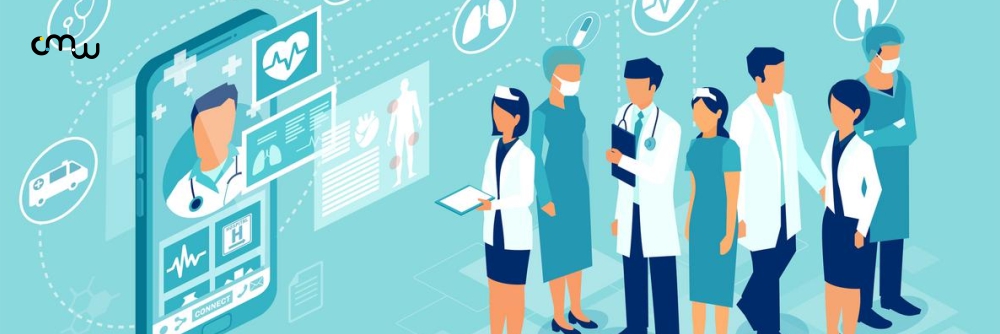Healthcare is a critical aspect of our lives, and its marketing has a significant impact on how people perceive and make decisions about their health. In recent years, consumer psychology has played a crucial role in shaping the direction of healthcare marketing. Understanding the psychological factors that influence consumer behavior is essential for healthcare marketers to create effective marketing campaigns that resonate with their target audience. This article will explore how consumer psychology influences healthcare marketing and the strategies that healthcare marketers can use to harness this knowledge to their advantage. By gaining an understanding of consumer psychology and its impact on healthcare marketing, healthcare providers can improve their marketing efforts, build stronger relationships with patients, and, ultimately, provide better care for their communities.
Understanding Consumer Psychology in Healthcare
Consumer psychology is a critical component of marketing in any industry, including healthcare. It refers to the study of how consumers think, feel, and act when making purchasing decisions. In the healthcare industry, this understanding is particularly important, as the products and services being marketed are directly related to the health and well-being of consumers.
A key principle of consumer psychology is that people make decisions based on both rational and emotional factors. For example, when choosing a healthcare provider, consumers may consider factors such as quality of care, convenience, and cost. However, they may also be influenced by emotions such as fear, trust, and comfort.
Consumer behavior also plays a significant role in healthcare decision-making. For instance, a consumer may be more likely to choose a particular healthcare provider if they have heard positive reviews from friends and family or if they have a personal connection to the provider.
The role of emotions and beliefs in healthcare choices cannot be overstated. Consumers may have certain beliefs about their health and the role that healthcare should play in their lives. These beliefs can influence their choices and make them more or less likely to seek out certain types of care or use certain products and services. For example, a consumer who values natural remedies may be more likely to seek out alternative forms of care, such as acupuncture or herbal remedies. In contrast, someone who values the latest medical advancements may be more likely to seek out cutting-edge treatments and technologies.
Healthcare Marketing Strategies Influenced by Consumer Psychology
Healthcare marketing strategies have a significant impact on consumer behavior and decision-making. Understanding the fundamental principles of consumer psychology is crucial to designing effective marketing campaigns in the healthcare industry. In this section, we will explore four main strategies that healthcare marketers can use to influence consumer psychology and ultimately drive more successful outcomes.
- Personalization and customization: Personalization is the process of tailoring marketing messages and experiences to the specific needs and preferences of individual consumers. In healthcare, personalization can help to build trust and credibility with patients by demonstrating that their needs and experiences are being considered. This can involve creating custom marketing messages and experiences based on patient data and demographics.
- Storytelling and emotional appeals: Storytelling is an effective way to engage and connect with consumers in healthcare marketing. By creating stories that evoke emotions, healthcare marketers can build a deeper connection with their target audience. This can be achieved through the use of visuals, audio, or video to bring the story to life. Emotional appeals are particularly effective in healthcare marketing as they can help to build trust and establish credibility with patients.
- Building trust and credibility: Trust and credibility are critical factors in healthcare marketing, and they are closely linked to consumer psychology. Consumers are more likely to trust healthcare providers who are transparent and provide clear information about their services and products. This can be achieved through the use of testimonials, case studies, and other forms of social proof.
- Utilizing social proof: Social proof is a powerful tool in healthcare marketing, as it is based on the principle that people are more likely to trust recommendations from others. This can involve using testimonials and case studies from satisfied patients, as well as leveraging online reviews and ratings to build trust and credibility with potential patients. By using social proof in healthcare marketing, healthcare providers can demonstrate the value and effectiveness of their services and products.
Successful Healthcare Marketing Campaigns
Healthcare marketing campaigns that are influenced by consumer psychology have the potential to make a lasting impact on the audience. Understanding the fundamental principles of consumer psychology and incorporating them into the marketing strategy can help to build trust and credibility, increase engagement, and ultimately lead to improved patient outcomes. By personalizing and customizing the marketing message, telling stories that resonate emotionally with the audience, and utilizing social proof to build trust, healthcare organizations can successfully reach and connect with their target audience.
Case studies of successful healthcare marketing campaigns can provide insight into the strategies and tactics that work best when incorporating consumer psychology. Analyzing these campaigns and understanding why they resonated with consumers can provide guidance for future healthcare marketing efforts.
Incorporating the principles of consumer psychology into healthcare marketing can lead to better patient engagement, improved health outcomes, and ultimately a stronger connection between the healthcare organization and its patients.
Challenges and Considerations in Healthcare Marketing
Healthcare marketing can be a delicate balance between providing valuable information to consumers while also meeting the needs and goals of healthcare providers. One of the critical challenges in healthcare marketing is to ensure that all marketing efforts are ethical and transparent. This requires careful consideration of the information that is being shared with consumers and the ways in which it is being presented.
Another challenge in healthcare marketing is finding the right balance between serving the needs of consumers and healthcare providers. On the one hand, consumers are looking for information and solutions that will help them improve their health and well-being. On the other hand, healthcare providers are looking for marketing strategies that will help them attract patients and build their reputation.
The role of healthcare influencers and influencer marketing is another important consideration in healthcare marketing. Influencers can have a significant impact on consumer decision-making and can help shape public perception of healthcare products and services. It is essential for healthcare marketers to work closely with influencers to ensure that their campaigns are authentic and aligned with the values and goals of both consumers and healthcare providers.
Understanding consumer psychology is crucial in creating effective healthcare marketing strategies. It is essential to consider the fundamental principles of consumer psychology, the impact of consumer behavior on healthcare decision-making, and the role of emotions and beliefs in healthcare choices. By taking these factors into account, healthcare marketers can create marketing campaigns that resonate with consumers and meet the needs of both consumers and healthcare providers.
In conclusion, consumer psychology plays a significant role in shaping healthcare marketing strategies. By understanding fundamental principles of consumer behavior, healthcare marketers can create personalized, effective campaigns that resonate with their target audience. However, it is essential to keep in mind the challenges and ethical considerations that come with healthcare marketing. The right approach requires balancing the needs of both consumers and healthcare providers while considering the influence of healthcare influencers.
Compendious Med Works is a healthcare marketing consultancy that provides specialized services to help healthcare providers and organizations reach their target audience effectively. With a deep understanding of consumer psychology and healthcare marketing, Compendious Med Works can help clients create impactful campaigns that build trust and credibility, resonate with consumers, and achieve their marketing goals. Whether you are launching a new product or trying to reach a new target audience, Compendious Med Works can help you achieve your healthcare marketing objectives.









